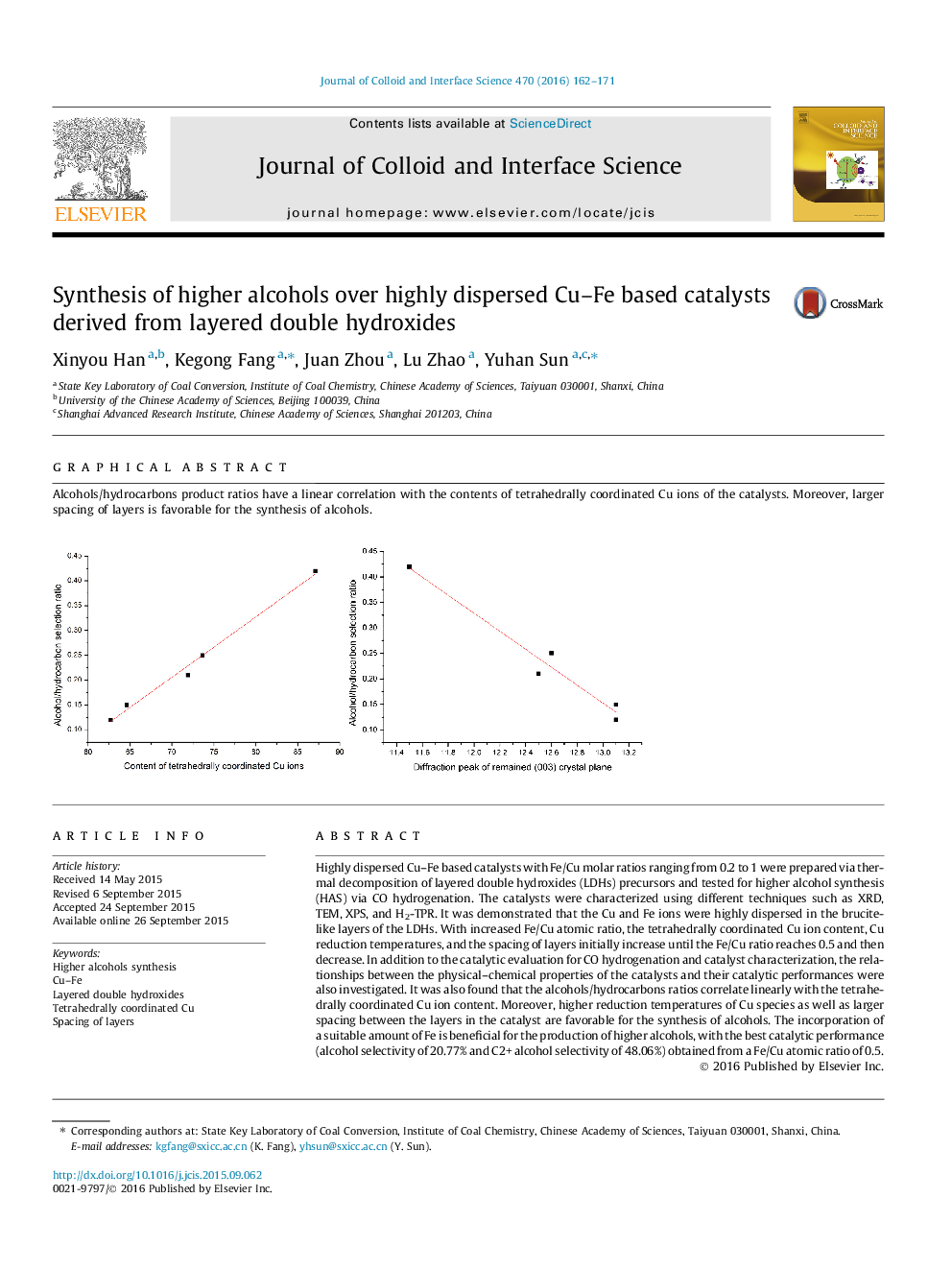| Article ID | Journal | Published Year | Pages | File Type |
|---|---|---|---|---|
| 606324 | Journal of Colloid and Interface Science | 2016 | 10 Pages |
Highly dispersed Cu–Fe based catalysts with Fe/Cu molar ratios ranging from 0.2 to 1 were prepared via thermal decomposition of layered double hydroxides (LDHs) precursors and tested for higher alcohol synthesis (HAS) via CO hydrogenation. The catalysts were characterized using different techniques such as XRD, TEM, XPS, and H2-TPR. It was demonstrated that the Cu and Fe ions were highly dispersed in the brucite-like layers of the LDHs. With increased Fe/Cu atomic ratio, the tetrahedrally coordinated Cu ion content, Cu reduction temperatures, and the spacing of layers initially increase until the Fe/Cu ratio reaches 0.5 and then decrease. In addition to the catalytic evaluation for CO hydrogenation and catalyst characterization, the relationships between the physical–chemical properties of the catalysts and their catalytic performances were also investigated. It was also found that the alcohols/hydrocarbons ratios correlate linearly with the tetrahedrally coordinated Cu ion content. Moreover, higher reduction temperatures of Cu species as well as larger spacing between the layers in the catalyst are favorable for the synthesis of alcohols. The incorporation of a suitable amount of Fe is beneficial for the production of higher alcohols, with the best catalytic performance (alcohol selectivity of 20.77% and C2+ alcohol selectivity of 48.06%) obtained from a Fe/Cu atomic ratio of 0.5.
Graphical abstractAlcohols/hydrocarbons product ratios have a linear correlation with the contents of tetrahedrally coordinated Cu ions of the catalysts. Moreover, larger spacing of layers is favorable for the synthesis of alcohols.Figure optionsDownload full-size imageDownload high-quality image (112 K)Download as PowerPoint slide
